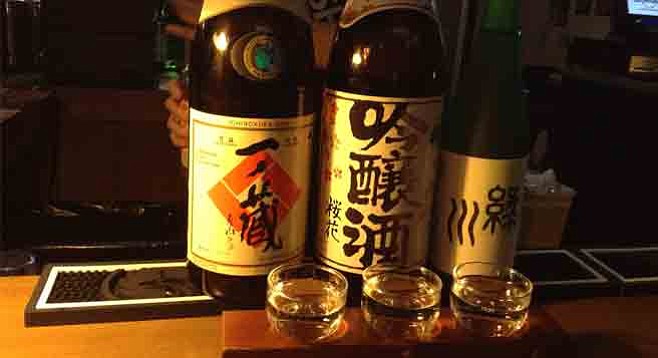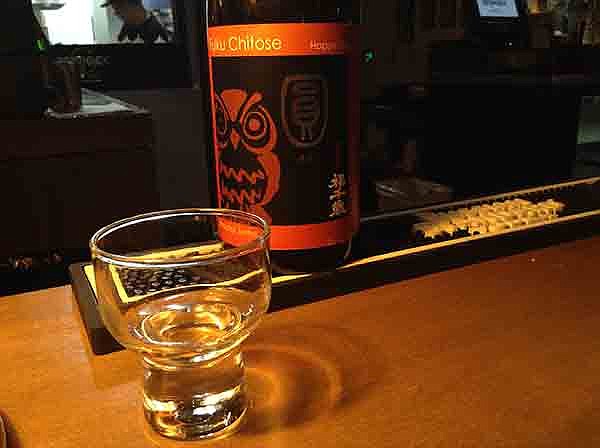 Facebook
Facebook
 X
X
 Instagram
Instagram
 TikTok
TikTok
 Youtube
Youtube

The other day, Cowboy Star, the very Texan steakhouse on 10th and Market, staged an interesting dinner: a nine-course meal built around Wagyu steak and saké.

“We had seven different sakés to pair with the different dishes,” says saké master Ayaka Ito.

For the Wagyu course, because the meat’s fatty, she chose Happy Owl, which is a nutty, full-bodied saké, served at room temperature. For the desserts of mousse and green tea cake, she served a “champagne-like saké” which had gone through a sealed second fermentation, to produce the bubbles.
“This is the new world of saké,” she says.
We’re talking at the bar of her Market Street ramen house, Beshock. She treats it like her missionary outpost. She has come from Japan partly to teach us how wrong we’ve been about saké. It’s not the hot little bottle of stuff you glug with beer chasers any more. That’s a hang-over from the post-war days when everything in Japan, including good rice to ferment, was scarce.
“Back then, all saké was served hot, just to disguise the fact that it wasn’t very good,” Ayaka says. “Now we serve it mostly cold, because we have developed incredible variety and quality.”
Indeed, she says saké regions’ names are jealously guarded. “It’s like the French wine appellation. The only difference is, where wine is 70 percent ingredients and 30 percent skill, saké-brewing is the opposite. Thirty percent ingredients and 70 percent skill. So, water counts, rice counts, but the brewing is all-important.”
“You taste the difference?” she asks as I sip yet another glass of transparent liquid. She’s trying to explain the contrasts between a Yamada Nishiki rice-based saké (“full body, rich”) and a saké fermented from Gohyakumangoku rice (“crisp, light”); also between how much the rice is polished, and types of water in regions such as Akita, Niigata, Kyoto, Hyogo and a dozen other saké-making locales in Japan.
And it turns out Ayaka’s not against all warm saké, especially in the depths of winter. But heat the right one, she says. “Don’t heat sakés with aroma. Like a sweet white wine, the sweet would become bitter on heating. The most popular saké to heat is Nine-Headed Dragon. It would go well with shabu shabu (a hot pot dish) and it’s a good saké for beginners.”
As the grandfather said in Moonstruck, I’m confused.
“Okay,” she says. “If you want to come to the bar, and order like you know your sakés, the first I would order is Ichinokura. It is nice and smooth. Then Oka (Dewazakura Cherry Bouquet). It’s sweetish, with a sharp finish. And third, Green River. It’s sweetish, with an aroma of green apple.”
And when you’re ready for the sophisticated stuff? “Happy Owl (Fuku Chitose). It has bite.”
Saké, all saké, is between 50-60 percent alcohol, according to Ayaka. Which may explain why my feet feel so far away from my head. Pretty soon, I won’t know the difference between saké and 7-Up.
“At least you’re trying it,” says Ayaka. “Many customers don’t want to even try saké.”
Her salvation lies in younger, hipper San Diegans, who she says are eager to explore.
The irony?
“Back in Japan, it’s the old who still drink saké. The young are into crazy cocktails.”


The other day, Cowboy Star, the very Texan steakhouse on 10th and Market, staged an interesting dinner: a nine-course meal built around Wagyu steak and saké.

“We had seven different sakés to pair with the different dishes,” says saké master Ayaka Ito.

For the Wagyu course, because the meat’s fatty, she chose Happy Owl, which is a nutty, full-bodied saké, served at room temperature. For the desserts of mousse and green tea cake, she served a “champagne-like saké” which had gone through a sealed second fermentation, to produce the bubbles.
“This is the new world of saké,” she says.
We’re talking at the bar of her Market Street ramen house, Beshock. She treats it like her missionary outpost. She has come from Japan partly to teach us how wrong we’ve been about saké. It’s not the hot little bottle of stuff you glug with beer chasers any more. That’s a hang-over from the post-war days when everything in Japan, including good rice to ferment, was scarce.
“Back then, all saké was served hot, just to disguise the fact that it wasn’t very good,” Ayaka says. “Now we serve it mostly cold, because we have developed incredible variety and quality.”
Indeed, she says saké regions’ names are jealously guarded. “It’s like the French wine appellation. The only difference is, where wine is 70 percent ingredients and 30 percent skill, saké-brewing is the opposite. Thirty percent ingredients and 70 percent skill. So, water counts, rice counts, but the brewing is all-important.”
“You taste the difference?” she asks as I sip yet another glass of transparent liquid. She’s trying to explain the contrasts between a Yamada Nishiki rice-based saké (“full body, rich”) and a saké fermented from Gohyakumangoku rice (“crisp, light”); also between how much the rice is polished, and types of water in regions such as Akita, Niigata, Kyoto, Hyogo and a dozen other saké-making locales in Japan.
And it turns out Ayaka’s not against all warm saké, especially in the depths of winter. But heat the right one, she says. “Don’t heat sakés with aroma. Like a sweet white wine, the sweet would become bitter on heating. The most popular saké to heat is Nine-Headed Dragon. It would go well with shabu shabu (a hot pot dish) and it’s a good saké for beginners.”
As the grandfather said in Moonstruck, I’m confused.
“Okay,” she says. “If you want to come to the bar, and order like you know your sakés, the first I would order is Ichinokura. It is nice and smooth. Then Oka (Dewazakura Cherry Bouquet). It’s sweetish, with a sharp finish. And third, Green River. It’s sweetish, with an aroma of green apple.”
And when you’re ready for the sophisticated stuff? “Happy Owl (Fuku Chitose). It has bite.”
Saké, all saké, is between 50-60 percent alcohol, according to Ayaka. Which may explain why my feet feel so far away from my head. Pretty soon, I won’t know the difference between saké and 7-Up.
“At least you’re trying it,” says Ayaka. “Many customers don’t want to even try saké.”
Her salvation lies in younger, hipper San Diegans, who she says are eager to explore.
The irony?
“Back in Japan, it’s the old who still drink saké. The young are into crazy cocktails.”
Comments